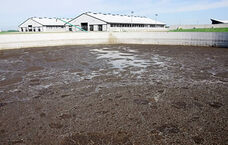
As this is an ongoing R&D project, I thought this would be a way to introduce you to how biological products are developed for new applications. We started with a manure degrading formulation developed in the 1990s but knew that advances in our technologies could improve the results. Working with several groups on introducing biological pretreatment in the animal houses, we are using extensive analytical testing in both pilot scale and working houses. Testing includes standard water chemistry tests and DNA based testing for changes in the biomass composition. The goals for adding biological products being:
- Reduce difficulty in pumping manure from collection pits to wastetreatment lagoons
- Lower noxious gases inside buildings - this includes H2S, ammonia, and odor causing VOCs
- Control dense crust formation which intensifies files and other nuisance insects
- Start biological degradation upstream of the waste treatment lagoon thereby reducing treatment time required in the lagoon system
- Pretreatment in animal housing is a cost-effective option
- Systems with straw bedding benefitted from adding a newly isolated high cellulase producing organism.
- The inclusion of biosurfactant and high cellulase strains improved manure liquefication which was the primary bottleneck in the pre-treatment system.
- Adding enzymes did improved the results
- The use of dry cultures immobilized on biosupportive carrier allowed for the inclusion of vegetative organisms for performance in lower temperatures and improved removal of H2S and other odor causing compounds
- The appropriate solution depends upon animals housed and other local conditons so there was no universal product

 RSS Feed
RSS Feed